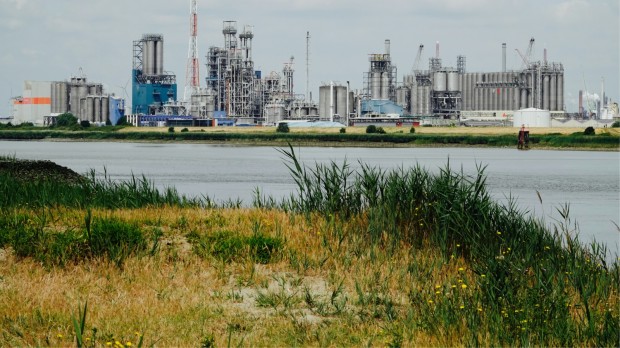As part of the Abu Dhabi National Oil Company (ADNOC) plan to enhance their production, they initiated the Al Nouf Artificial Island construction. Recently, it was awarded to the National Marine Dredging Company (NMDC) with a $136.8 million contract.
(Photo : Unsplash/Paul Teysen)
Building Al Nouf Artificial Island
The oil and gas growth initiatives of ADNOC were reportedly 'gaining momentum.' By 2027, the state oil company expects its production capacity to increase from four million barrels per day (bpd) to five million bpd at billions of dollars.
Near its Al Nouf oilfield, which commenced operations in 2005, ADNOC has granted a significant offshore contract to a fellow UAE company, NMDC, to develop an artificial island. Over the next few years, the oil company intends to expand its production of unconventional oil and gas, particularly sour gas, and its output from the field.
Establishing an artificial island is a component of ADNOC's overarching strategic strategy to increase its daily oil production capacity to five million barrels by 2030. Additionally, the daily output capacity of the Al Nouf oilfield is growing from 160,000 to 175,000 barrels.
On the other hand, as part of an initiative to increase the offshore site's daily output to 520,000 barrels, the oil company awarded ADNOC L&S a $975 million contract in June 2023 to develop an artificial island in the Lower Zakum oilfield.
Accordingly, creating these artificial islands and increasing the ability to produce oil both have enormous repercussions for the oil business worldwide and for the oil industry in the local area. Since ADNOC is continuing to invest in infrastructure and expansion projects, the city is on track to dramatically enhance its contribution to the production of oil on a worldwide scale.
Also Read: Redevelopment of Mixed-Use Facility Project in New Jersey Secures $54M Funding
Saudi Arabia's Oil Industry
Saudi Arabia is responsible for producing approximately 12 million barrels of oil daily, accounting for nearly 12% of the total global output. Between 2003 and 2012, the nation was the world's leading oil producer. However, following that decade, it fell to the second spot in the rankings due to the rising oil output in the United States. Thus, Saudi Arabia continues to be the region that exports the most petroleum globally.
With a considerable hydrocarbon potential, Abu Dhabi's oil and gas industry has experienced remarkable growth in recent years. However, although covering only 84,000 square kilometers, the United Arab Emirates is among the top 10 nations in reserve size. As mentioned, ADNOC is responsible for almost all of the oil and gas production. The nation has historically invested a significant amount of money into its greenfield projects to maintain a steady balance between its reserves and output. This is because the oil and gas business generates revenues and royalties.
The United Arab Emirates economy is reportedly centered on the oil and gas industry, which accounts for 40% of the country's gross domestic product. Nevertheless, the nation has exerted considerable effort to achieve economic diversification via its Vision 2030 endeavor, which entails the development of robust manufacturing and downstream sectors. It is important to note that the hydrocarbons sector continues to be the country's central economic pillar and the primary enabler of diversification despite non-oil industries becoming an increasingly important component of the country's GDP.
Related Article: UK Government Approves Construction of $2.5B Project for Carbon Capture Facility







